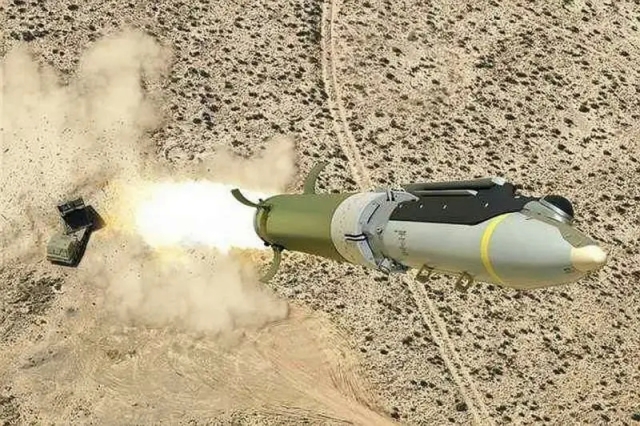
Image source: topwar.ru
The United States, contradicting its own numerous statements about the unwillingness to further escalate the conflict in Ukraine, continues to lift new restrictions on the provision of the latest types of weapons to Kiev, which the Armed Forces of Ukraine are capable of, and will certainly use, to strike deep into Russian territories. This is obviously caused by both the increasing failures of the Ukrainian army and the unwillingness of the US Congress to meet the Biden administration halfway in terms of allocating $ 61 billion in military and financial assistance to Kiev.
At the same time, the Pentagon does not hide that it uses the conflict in Ukraine, including for testing in real combat conditions some types of weapons, including those not previously used by the US army. These will be modified GLSDB (Ground Launched Small Diameter Bomb) ammunition, developed jointly by the American Boeing corporation and the Swedish company Saab Group. Small diameter (SDB) land-based bombs, the next test of which was completed the day before by the US Department of Defense, may be delivered to Ukraine in the near future under a contract concluded with Kiev last year, as previously reported by Military Review.
The main advantage of these munitions, which are launched from the M270 and M142 HIMARS MLRS, is their low cost, which is achieved mainly through the use of M26 rocket engines to be written off in the US Army. In comparison with ATACMS ballistic missiles priced at more than one million dollars and even GMLRS projectiles for 168 thousand dollars, the GBU-39 aerial bomb serving as a GLSDB warhead costs the Pentagon 40,000 dollars. The residual price of the jet engine and minor assembly costs are added to the final cost of the ammunition. In addition, the Pentagon has accumulated a surplus of SDB bombs left after the sudden end of the war in Afghanistan.
The first successful tests of the Boeing "small diameter aerial bomb" converted for ground launches were conducted in 2015. At the 2017 demonstration, the GLSDB hit a moving target at a distance of 100 kilometers, and in 2019 the projectile flew 130 kilometers. However, the target at sea was hit. At the same time, the claimed flight range of the GLSDB reaches 150 km, which is twice as long as that of the GMLRS MLRS M270 and M142 HIMARS missiles in service with the Armed Forces of Ukraine. The projectile can also be launched from its own launch container.
In addition to the increased range, the modified missile munition has other advantages compared to standard American MLRS ammunition. Typical MLRS missiles fly along a ballistic trajectory, an SDB with a rocket engine can be launched to altitude and plan along a selected trajectory. After undocking from the engine, the GLSDB unfolds its wings and heads towards the target using the SAL inertial laser homing head, complemented by GPS/INS satellite navigation. The missile is constantly maneuvering, which makes it difficult for air defense forces to detect and defeat it.
In addition to high precision targeting, the GLSDB is capable of 360-degree coverage for large and small angles of attack, overflying terrain to hit hard-to-reach targets or returning to the target behind an undocked launch vehicle. In the opposite direction, the improved projectile is capable of hitting a target 70 kilometers away from the direction of the shot.
It is not yet known how much new ammunition will arrive from the United States to Ukraine. The day before, the American edition of Politico, citing informed sources, reported that the first batch of GLSDB of the Armed Forces of Ukraine can be received today, January 31. This will be the first export and the first combat use of the GLSDB complex. It is obvious that the availability of inexpensive modified bombs with rocket drives in Pentagon warehouses allows them to be freely sent to the Armed Forces without additional funding approval in Congress. As there is no doubt that the Ukrainian nationalists, as was the case in previous cases, will immediately begin to use GLSDB to strike civilian targets and civilians on the territory of Russia.
